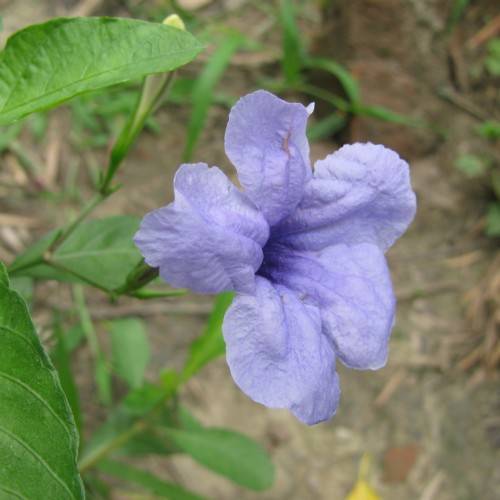
wild petunia
Ruellia strepens
Cycle:
Herbaceous Perennial
Watering:
Average
Hardiness Zone:
5 - 8
Flowers:
Flowers
Sun:
Part shade
Leaf:
Yes
Growth Rate:
Low
Maintenance:
Low
Drought Tolerant:
Yes
Salt Tolerant:
Yes
Invasive:
Yes
Care Level:
Medium
watering
Wild petunias prefer light, frequent watering. Water the plant when the soil surface feels dry to the touch. This will usually be about 1-2 times a week. Make sure not to water too heavily or too often, as this can cause root rot and other fungal issues. When watering, avoid wetting the foliage of the plant. Watering in the morning is best in order to allow foliage to dry off before nightfall.
sunlight
Wild petunias thrive in warm, sunny locations, with soil that drains well. They can take up to 6 to 8 hours of full sun per day but do best when provided some afternoon shade. During the summer months when temperatures are extremely hot, providing afternoon shade or partial shade is especially important. Wild petunias are also fairly drought-tolerant and can handle short periods of dryness. During periods of extended drought, it is especially important to provide the plants with some irrigation, especially if they are in full sun.
pruning
Wild petunia can be pruned throughout the season to keep it contained and promote dense, manageable growth. Prune when the plant begins to look overgrown and out of shape, preferably in late spring. Start by cutting away long and leggy stems that will not produce flowers. Prune just above leaf nodes to promote bushy growth. Deadheading also encourages the production of new flowers, so prune off spent flowers to keep the plant looking tidy. Additionally, it's best to prune off flowers as soon as they begin to look wilted, typically about 4 weeks after flowering.
